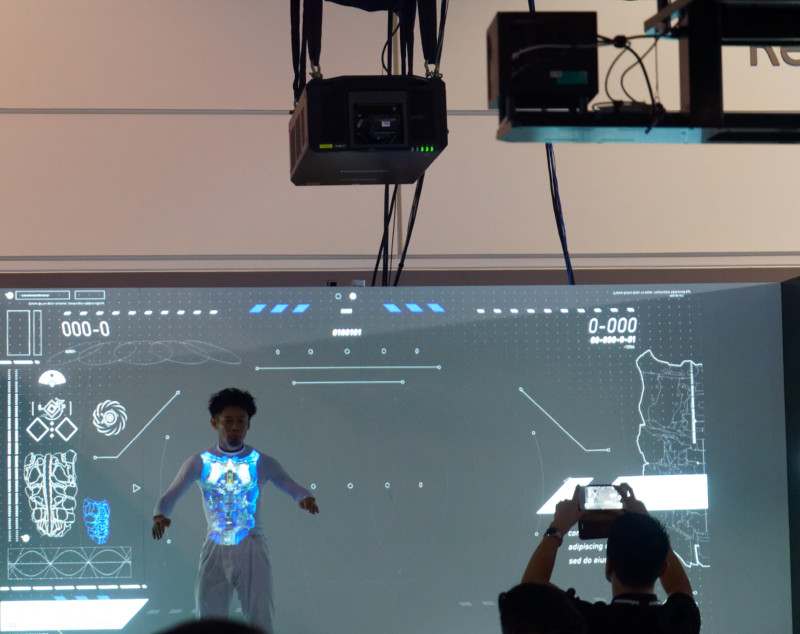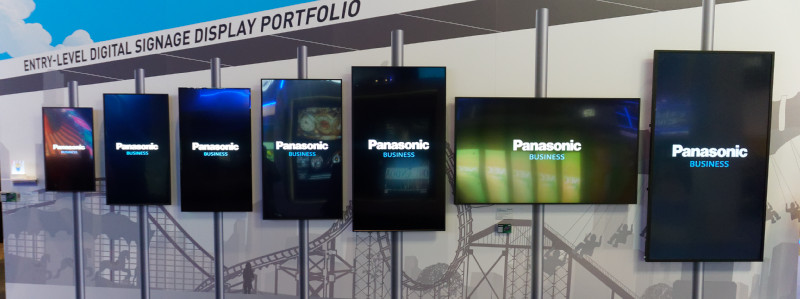Panasonic was putting the emphasis on its booth on its integration skills, rather than simply highlighting product supply. There was a new high speed projection mapping application that was mapping a ‘breastplate’ and other patterns onto a dancer’s chest in real time. To respond accurately, the processing has to be very fast and the results were impressive – with a claimed delay of just 1.6 ms. To do the tracking, the firm was using specially modified infrared versions of the ‘Spaceplayer’ projector and the dancer had a reflective costume. Two projectors were being used – one for the background and one for the dancer.
To prove that the demonstrations were not faked, the company was offering prizes to attendees that were prepared to get on stage and ‘have a try’. There were also several demonstrations of the LinkRay infrared backlight technology (which is now being used in real applications (Panasonic LinkRay Technology Enhances Visitor Experience at Petersen Automotive Museum) and there were also demonstrations of a mirror display that includes a proximity sensor. Panasonic is working with IBM Watson AI technology to enable smart retailing solutions.
 Panasonic showed this fast responding mapping app. Image:Meko
Panasonic showed this fast responding mapping app. Image:Meko
A new LCD display is a 75″ UltraHD panel with an infrared touch overlay that can be used in landscape or portrait mode. Brightness is 480 cd/m² and more details will be available nearer the launch, ‘later in 2017’. There was also a new 84″ in the VF series that will arrive later and will have 300-400 cd/m² of output.
 Panasonic showed its full LFD range. Image:Meko
Panasonic showed its full LFD range. Image:Meko
New at the show was a ‘dome’ or ‘fisheye’ projection lens that can support up to 183º field of view. A single projector dome system was being shown. There was a small area of the dome just above the projector that did not have any of the image, but the system is dramatically simpler than a multi-projection setups and for applications which need immersion, but where VR headsets are not wanted or not appropriate, it looked like a pretty good solution. The lens is expected to become available in November.
There were two new projectors on display, both with 20K Ansi lumens and one with a laser phosphor light source (RZ21K) and one with a lamp (DZ21K). Both have the same ‘small” form factor design and will be available ‘in the fall’. The company had planned part of the booth to use two of the L/P units together in a blended configuration, but after a shipping issue, they had to use a lamp-based unit alongside the L/P one. That meant an unplanned opportunity to highlight the differences in visual performance.
The MZ670 is a laser phosphor projector that is aimed at classrooms and has 6,500 Ansi lumens of output. Panasonic expects the unit to be sold into classroom applications.

